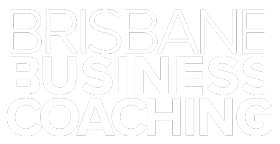Have you thought about stepping away from your business, but don't know where to start? We’ve met plenty of business owners who don't have a proper succession plan, yet around half of them want to exit within the next five years.
Now, if you don’t plan your exit properly, things can get messy. Families argue, the business loses value, and your hard work can quickly fade away. That's why we've put this guide together to show you how to prepare for succession, pick the right exit, and get the right support.
Let’s begin with business succession planning.

A business succession plan is your roadmap for handing over ownership when you decide to step back. It maps out who takes over, how the handover happens, and what your exit looks like.
Let's walk through what this means for you.
Deciding on a replacement is your first step, but succession planning goes much further. You’ll need to figure out how to transfer your business assets, work out what the company is worth, and create a realistic timeline.
The process also includes protecting everything you've worked so hard to build. Plenty of owners assume it only applies when family members take over, but you actually have way more exit options than that.
Life has a habit of throwing surprises your way like unexpected illnesses, major relationship changes, or sudden market shifts can push you to act before you're prepared.
But most owners wait until they feel completely ready, but in reality, that moment doesn’t really exist. We’ve seen how fast circumstances can change, and preparation also often takes longer than people anticipate.
Bringing family into the mix can make succession even more complicated. Because what seems fair to one person might feel unfair to another.
And without honest conversations early on, these tensions can hurt both your business and your personal relationships down the track. So, let's get into the actual steps you need to take.

Creating a succession plan can feel like a massive task when you first think about it. But we’ll show you how to create your exit strategy one step at a time to keep it manageable.
Your timeline affects every other choice you'll make in your exit plan. But if you know your target date, you can work backwards and prepare everything that needs to be done.
Here's what needs to happen at each point along the way:
Whatever succession plan you pick, don’t speed through it or set a one-year timeline. Trust us, these five years will be gone before you know it.
Choosing who gets the business is probably the biggest decision you'll face. Each option comes with different benefits and challenges, so think carefully about what fits your situation.
Your main choices include:
Think about what’s most important to you in terms of legacy, control, and financial return. Your choice here will decide how you prepare over the coming years.
Getting someone ready to take over the business isn’t easy since they need both technical and leadership skills. This is when you follow your timeline and start mentoring your successor at least two years before the handover.
You can also hire coaches to share the work and support them in managing the stress of running the business.
A business that can operate without your daily involvement is often worth more and easier to transfer. For that, the most important thing is to document every system and process so new people can follow them without constant questions.
You can also get a valuation to know your business’s worth, and save on taxes and legal costs.
Walking away from your business is a massive life change, even when you're the one choosing to go. Have you thought about how you’ll spend your days without managing people and handling problems?
You need to put thought and planning into finding new sources of purpose and meaning too. If you prepare yourself mentally, the emotional side of letting go can feel more like gaining freedom.

Your exit strategy needs to match both your financial goals and what you want for your future. Let's explore the options available and how to choose wisely.
You've got several paths when it comes to leaving your business. But the right choice for you will ultimately depend on your financial needs, timeline, and what you want to happen to the business.
Each option gives you different money outcomes and asks different things of your time. But try not to lock yourself into one idea too early, as we’re very familiar with plans and priorities shifting as things develop.
Many business owners make avoidable mistakes during their exit because they rush to leave or ignore warning signs. We don’t want you to be one of them, so remember to avoid:
Avoiding these mistakes won’t guarantee you a perfect exit, but it definitely improves your chances.
Waiting too long is the most common mistake business owners make in succession planning. But now you know better.
It doesn't matter if retirement is years away, you're considering selling soon, or you just want a backup plan for unexpected situations. The conversation needs to start today.
Sit down with your family and talk honestly about what everyone expects. When the timing's right, bring your team into the loop too. Most importantly, find a Brisbane coaching professional who gets how local businesses work and can walk you through each step.
Ready to take charge of what happens next? Head to Brisbane Business Coaching and start building your succession plan with someone who understands Queensland businesses.

Copyright 2020-2025 © Matter Solutions Pty Ltd